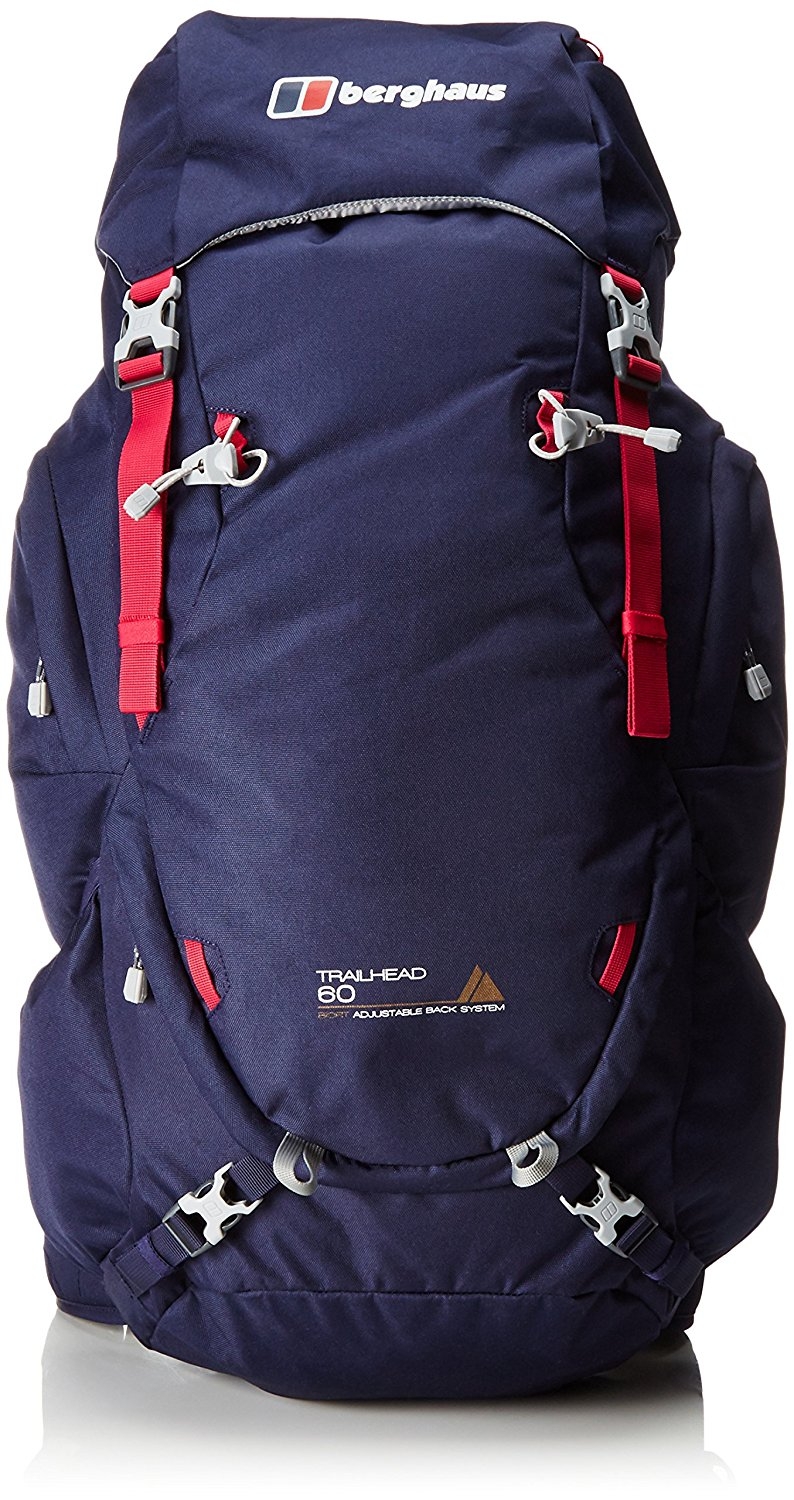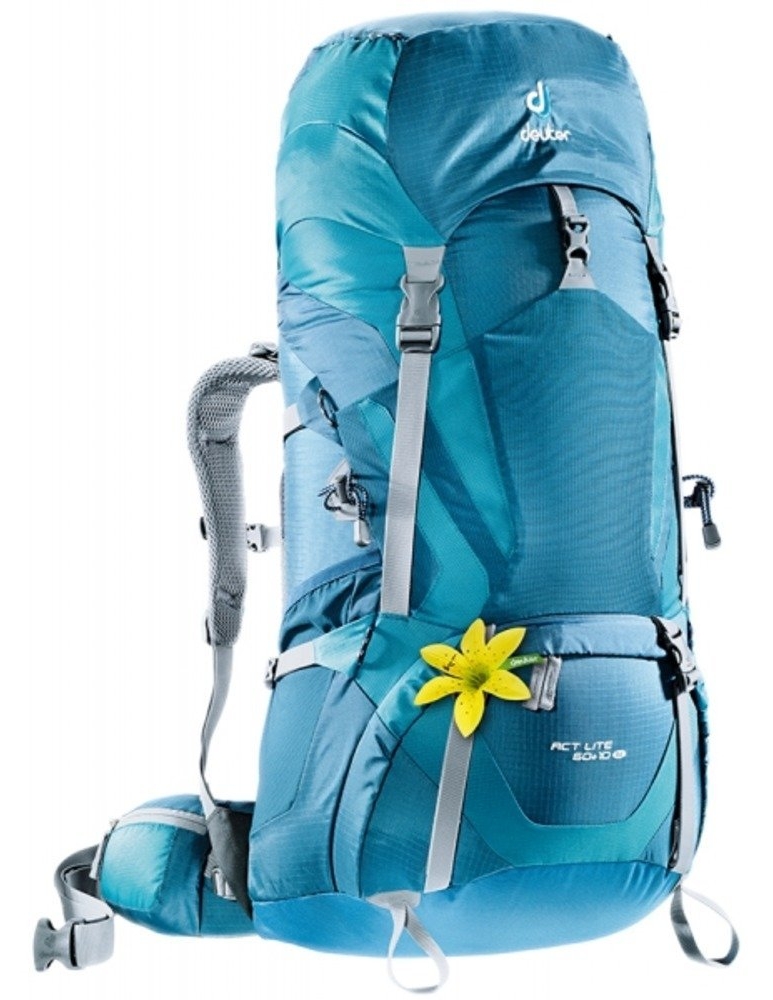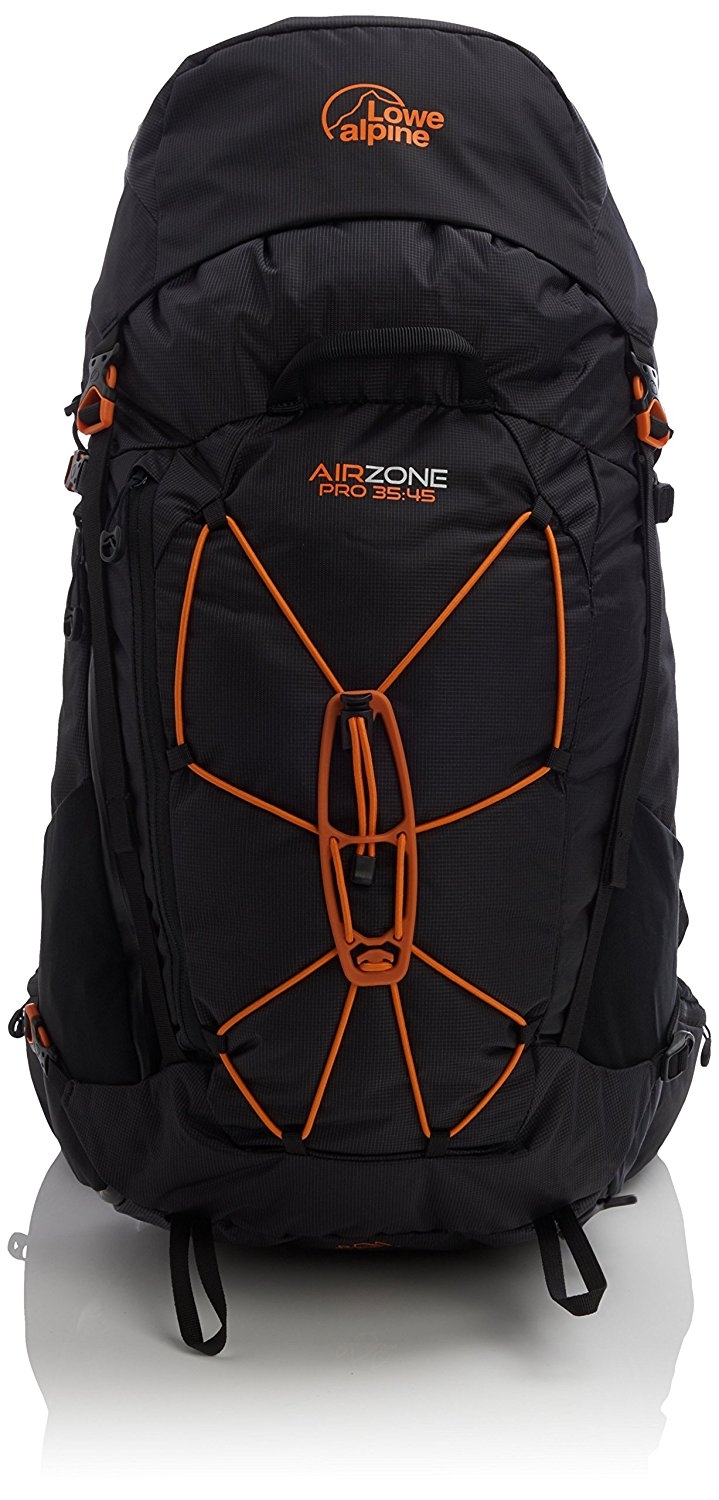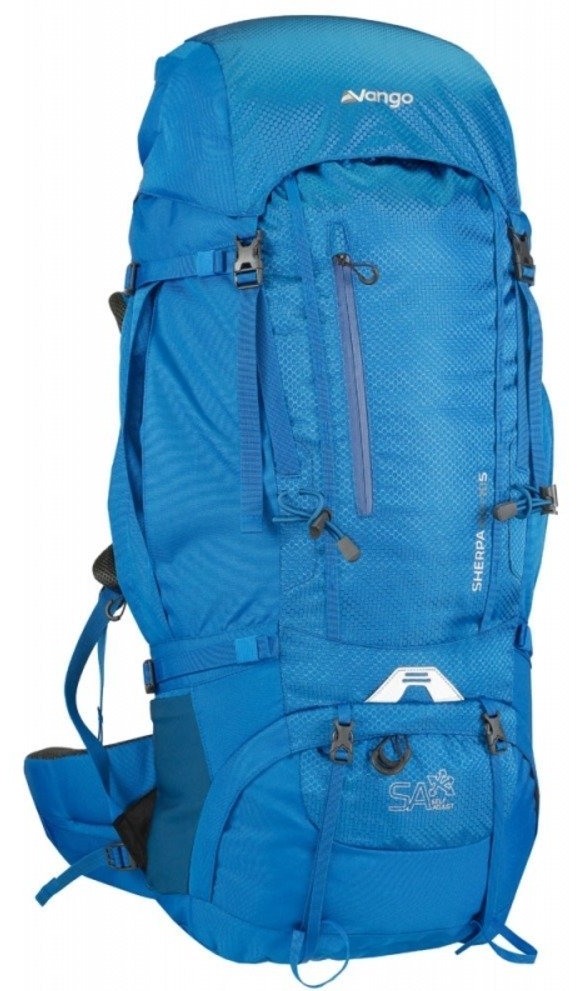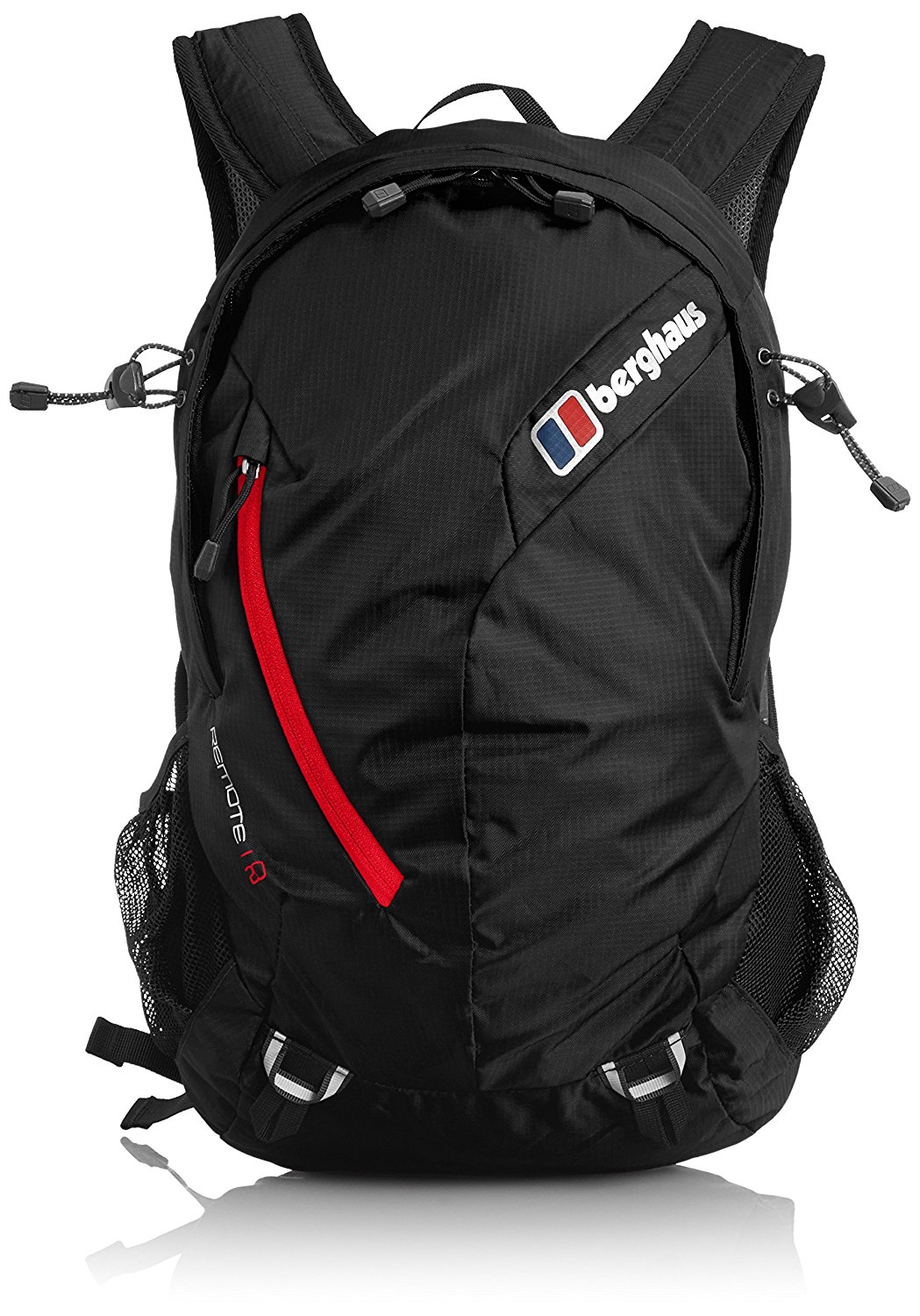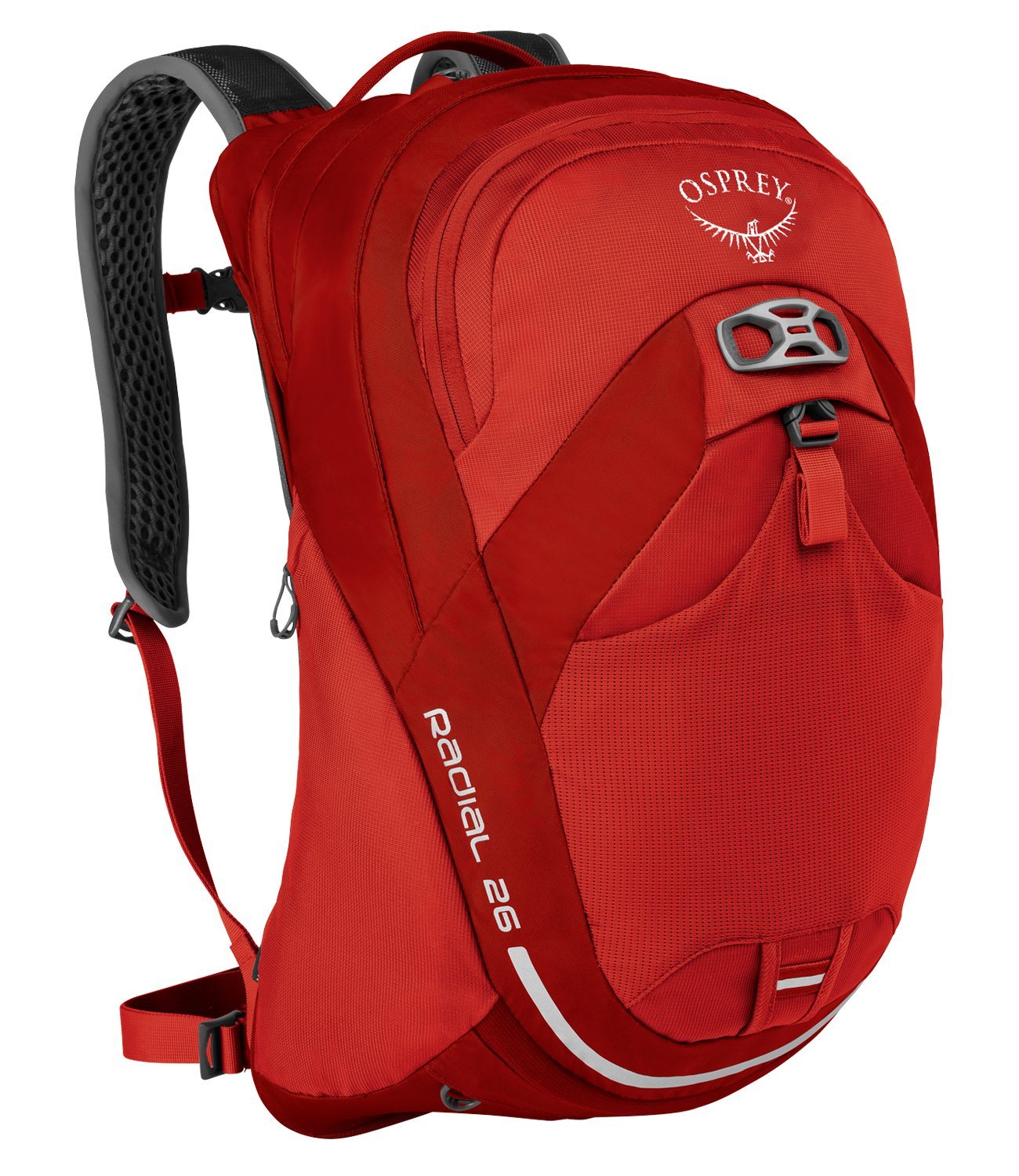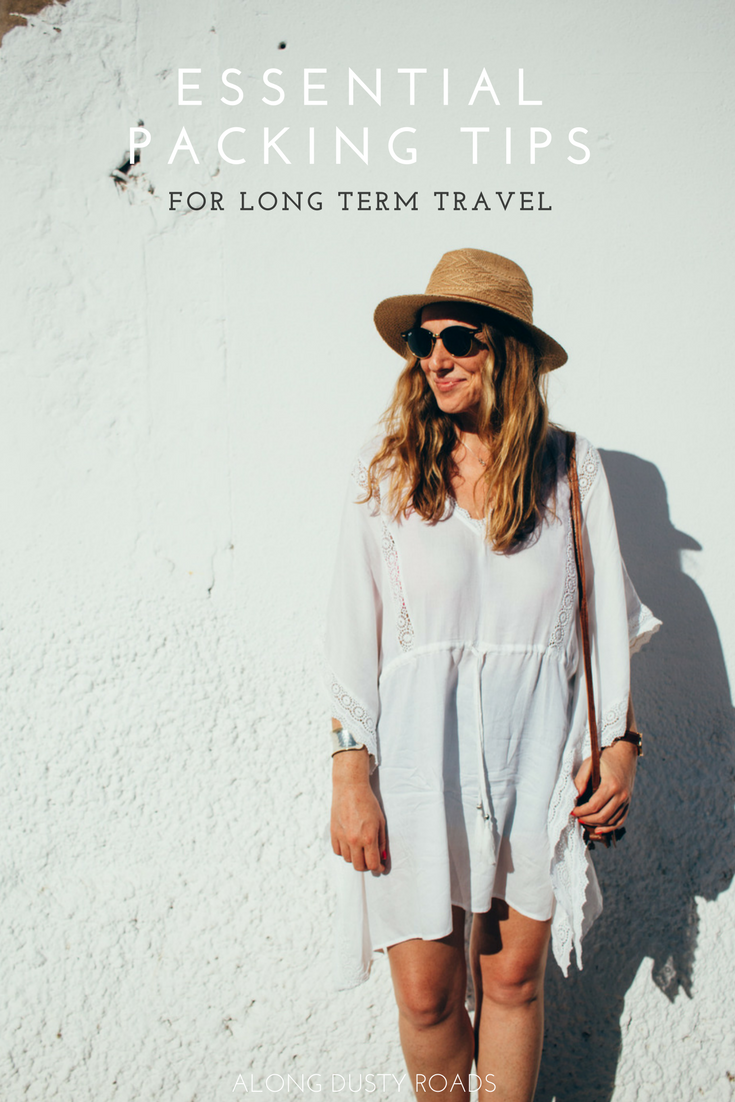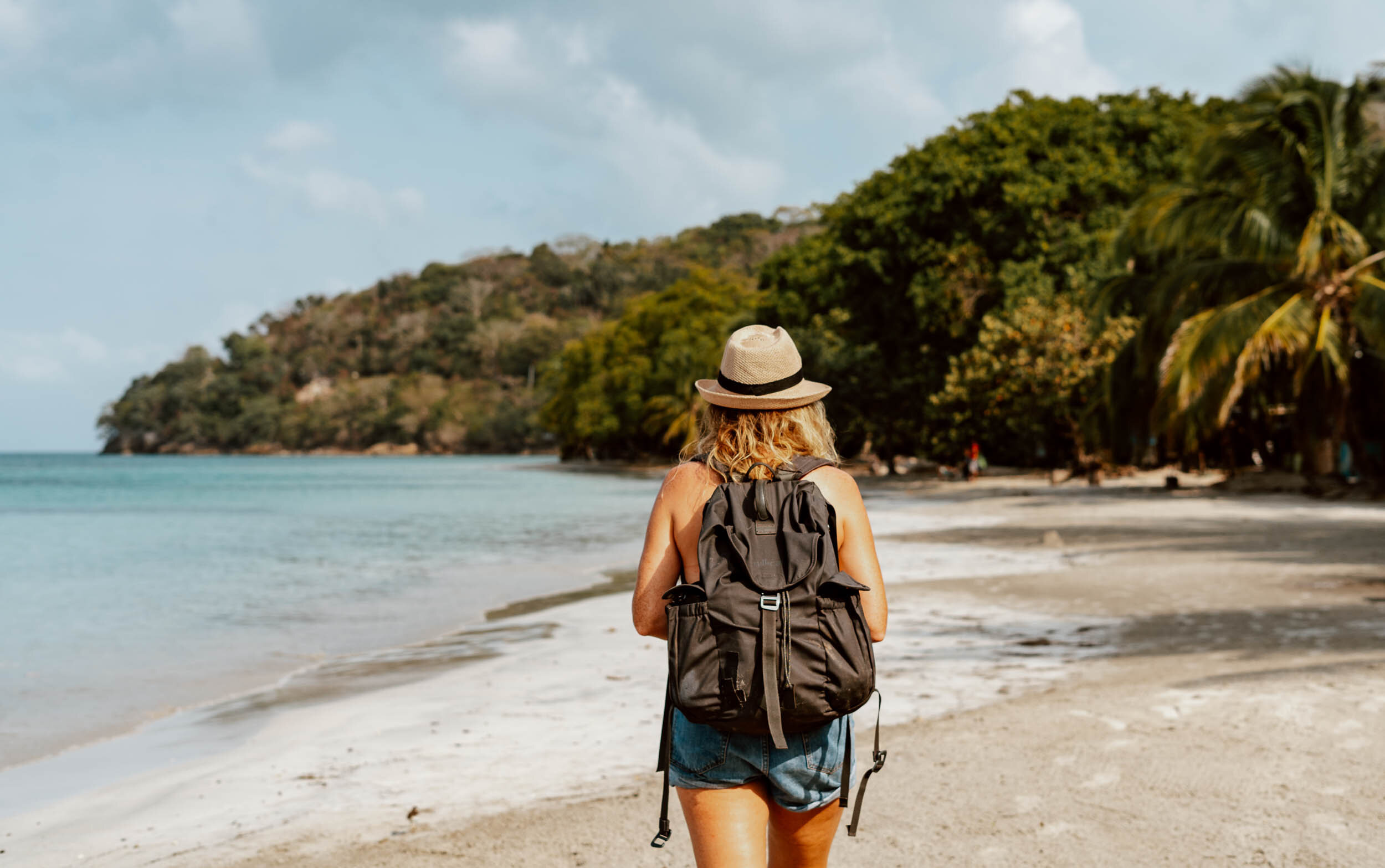“There is always a sadness about packing. I guess you wonder if where you’re going is as good as where you’ve been.”
A decade of travelling around the world has meant that we’ve made a lot of mistakes when it comes to packing.
We’ve packed too much and packed too little, we’ve had toiletries explode in our bags and lost things tied onto the backpack, we’ve fallen over after stuffing everything into the top when leaving a hostel in haste and we’ve suffered the back pain from having the straps set-up all wrong.
So, although there is no silver bullet when it comes to packing technique, we thought we would share some of the lessons we’ve learned along the way to save you time, stress and some avoidable packing disasters when carting your entire life on your back on your next big backpacking adventure.
Pick the right backpack
Well, we thought we’d go with the most obvious one for starters.
For any long-term trip, you won't find us going for a suitcase; it's all about the backpack. Of course, they're not everybody's cup of tea, but when you're having to throw your belongings atop a chicken bus, or walk a couple of kilometres along a dirt road, having something strudy that you can strap to your back is so much easier.
Picking the right one however, will take a little longer.
Whilst some people rave about the front opening, pack-it-like-a-suitcase jobby, we're much bigger fans of the top-opening traditional backpack, with decent side pockets (more on those later), and a front facing zippered section at the bottom - although what-goes-where requires a little more thought, it gives you accessibility to the three key points of your backpack, thereby allowing you to have some sort of semblance of a packing system.
Our top travel backpacks
Try to find one with an easy-to-operate rain cover. Not only will it keep everything dry, but when storing your bag on buses it makes accessibility for wandering hands a little less convenient / tempting; it also lengthens the life of your backpack dramatically.
We always recommend that you buy a backpack after having had the chance to try it on for size in person; don't just buy the one that has nice colours and brand name you recognise. Adequate back support is important and picking the right backpack should be viewed as an investment; any decent one should last for at least five years hard backpacking.
Your backpack should always be complemented by a smaller (20-30L), versatile lightweight daypack which will store your valuables, act as your carry-on for bus and plane journeys and accompany you on day-trips. On shorter trips you probably won't need such a large daybag, but for long-term travel (especially if you're doing overnights or long hikes), you'll actually value bringing something a little larger and more practical.
our top daybags
The Along Dusty Roads packing structure
After many tweaks along the way, the more organised member of Along Dusty Roads (cough) settled on the following structure for our backpacks for any trip where we're moving around a lot or travelling for more than a couple of weeks. As you can see, this is why we recommend picking a certain style of backpack!
Side-pocket 1: Underwear and socks
Side-pocket 2: T-shirts, vest, light-weight tops, skirts or dresses.
Bottom-third: Day-to-day larger/bulkier clothes like trousers or shorts, shoes, shirts or jumpers and laundry bag.
Middle-third: The things you don’t need right now, but will need later on in the trip. This can include hiking clothes, winter, medical supplies, non-essential cables or chargers.
Top-third: Easy access items, such as toiletries, travel towel, hoodie, hostel spice box. These are the essentials which you'll pull out and need every day. Having them at the tops will allow you to quickly settle into any new hostel and, by always storing them here, it makes it very easy to pack them all up before you leave for the next place.
You Don’t have to be a minimalist
There’s definitely a trend, which we totally understand, promoting a minimalist or ‘hand luggage only’ approach to packing.
Although we were mightily impressed that some other long-term travellers have managed to fit their entire lives in one piece of carry-on, it simply isn't for us. Indeed, without knowing it, for our two-year trip through Latin America, we adopted a wholly anti-minimalist philosophy - the "stuff as much as you can in your rucksack until you fall over" philosophy, if you will.
As with everything, it's about balance (and not just the type that means Emily won't fall over when walking with her rucksack). Fundamentally, we would rather carry a little more than go without; we want to be able to have outfits appropriate for different settings and climates and never want to be limited to being the traveller in a cool bar in Buenos Aires wearing hiking boots, shorts and a fleece.
If you're like us, then the best piece of advice we can provide is to:
1) Focus on what is 100% essential to your trip; your health and your well-being on the road is more important that focusing on a philosophy which restricts you too much.
2) Making a pre-packing list to try and understand what sort of activities you’re going to be undertaking on your trip and what the likely climate will be – this will help you establish the range of items which are necessary.
3) Lay out all the items that you think you might need at least a week before your departure - and then cut this down by at least 30%. The reality is that you're hard-wired to try and take more than you really need and sticking to this means you will cut down on at least a few unnecessary kilos.
4) Test it out before you leave! If it's too heavy in your mum's kitchen, then it will be far too heavy when you're pounding down a dusty road searching for a hostel in Nicaragua or Bali.
4) Don't leave with a full bag - you will need space as you travel and will naturally want to pick up some things when you're travelling. If your bag is already overstuffed before you leave, then you simply won't have the space and will start to resemble a pack donkey with a plethora of bags balanced upon your person.
ROLL VS. FOLD
De Niro or Pacino? City or Utd? The Beatles or the Stones? In the roll vs. fold debate, there really is one clear winner.
Rolling your clothes not only saves a lot of space, it helps to reduce the inevitable amount of creasing which can occur when storing everything in a backpack. For bulkier items, we sometimes found that folding them took up less space but, for everything else, you've got to roll.
(It's De Niro, Utd and the Stones by the way)
Don't Take All Your Favourite Clothes (and remember that white doesn't travel well)
As we shared in our 16 entirely wrong assumptions about long term travel post, the reality is that those white vests and t-shirts will inevitably get covered in unavoidable pit stains, dirt from your backpack and, between your hand-washing and unreliable laundry services, will just never look clean and crisp again.
For sure, pack some of these and wear them sparingly, but make sure the majority of your traveller wardrobe is not light or white.
The same goes for your absolute favourite clothes.
If you're only travelling for a month or two, then you don't need to worry too much about this, but if you're packing for a long-term trip, think twice before taking your absolute favourite t-shirt or pair of jeans with you - the likelihood is they won't be coming back. It's actually quite fun returning from your travels and rediscovering old favourites that you left behind in the wardrobe - it feels like a whole new outfit!
Laundry Bags are Essential
Although your threshold for what constitutes dirty or unclean shifts dramatically when you’re on the road, it’s essential that you keep the stuff that truly stinks away from your precious laundered items. A plastic bag can do the trick, but needs replacing frequently so we recommend a tote bag or a travel vacuum bag. Having a dedicated laundry bag is also a convenient way to bring everything to the laundrette which needs washing without having to empty out your entire bag in search of that dirty pair of pants.
We would store this in the bottom or top third of your backpack, but remember to roll or fold the dirty items so they don’t take up unnecessary space.
Pack Versatile Items
As Emily has beautifully outlined here, two-week flashpackers can get away with a lovely new outfit each day of their trip; this isn’t the case for long-term backpackers.
Try to pick items which can be used for multiple purposes or in various settings. For example, shorts which can be used to wander around cities as well as on a hike or partying in a hostel (hint, those will be denim shorts) or a good quality t-shirt or vest which can double up for any hikes, runs, sports or just hanging out in the hostel. One of our most useful items was a sarong we bought in the Philippines for less than a pound - it was our beach blanket, dorm bed privacy curtain, extra blanket, emergency towel and scarf in the desert and on winter hikes.
The clothes you take also need have a decent level of durability as they will take a beating on any long-term trip.
And always, always make sure you bring at least one go-to outfit for going out in. You don’t want to be the person wearing hiking boots and a fleece at a beautiful bar in Buenos Aires either now, do you?
USE PACKING CUBES AND VACUUM BAGS
With limited space available, and backpacks offering little in-built organisational structure, vacuum bags and packing cubes provide the opportunity to make a little more sense of the space.
The downside of a vacuum bag is that it allows you to pack more stuff into the same space and so it’s important you don’t fall into this deceptive trap. For us, they’re best used to compress and store the items you know you definitely won’t always need (i.e. cold weather clothes when you’re going to be by the beach for the first few months of your trip) in a space-saving manner in the centre of your backpack.
To use these bags, roll your clothes, put them in, seal the bag and roll/squeeze the air out before sealing it.
Packing cubes, on the other hand, actually take up a little more space but provide you with a way to make things make more sense. In Latin America, we used them mainly to keep our medical supplies and our spare cables and camera equipment in one convenient place, with certain items of clothing also kept there until we needed them. Alternatively, they can be used to structure the bottom or top-third of your backpack into easily identifiable ‘grab bags’, with each holding certain day-to-day items of clothing.
For vacuum bags, we recommend these, whilst these are the excellent value packing cubes we use.
STOP TAKING SO MANY BLOODY SHOES!
For guys and girls, shoes are the real space killer. Building upon the ‘versatile items’ point above, it’s important to be brutally honest with yourself about what you’re going to be doing on the trip and what is essential to fulfilling that bucket-list. Our approach?
1 pair of ‘style’ trainers or shoes which can double up as day-to-day walking shoes in towns and cities, in bars or nights out and on transport days.
If you are definitely going to be doing a lot of serious hiking, then a proper pair of lightweight hiking shoes is essential. Andrew has used these waterproof low-rise Merrels for the last four years, and they also have the same range in women's sizes and styles. If you aren't going to be doing big hikes, then you can probably make do with a good pair of lightweight trainers with decent grip instead.
1 pair of sandals/flip flops for guys, whilst girls are likely to take one nice pair of sandals to wear out and in the city as well as a pair of flip flops. For our last trip in South America we invested in a pair of Birkenstocks each and they were perfect.
The key thing with shoes is that you know you’re always going to have to be wearing a pair when you’re actually lugging your backpack from place to place. So, on those days, save space and weight by wearing your trainers or hiking shoes, rather than the flip flops. When really lacking space (usually because we had packed badly when leaving a hostel) we would tie a pair of shoes on the outside of our backpack (but make sure you tie them VERY securely!)
A great little tip? Always have a supply of plastic bags to wrap your shoes in before packing them away or buy these pouches for a more permanent solution.
Fill Dead Space
Whilst keeping the above principles in mind, and trying not to simply stuff every single item you own into your backpack, one of our favourite little tricks is to make sure there is no wasted space. Maybe store some jewellery or a t-shirt or two inside your shoes and try to slide the odd item in and around the sides of the main backpack compartment - there's always a pocket or two of space to be filled.
Bring a Base Layer
Planning for our two years in Latin America, we knew that we'd come across some very chilly temperatures, and so we invested in a decent set of merino wool thermals. These proved to be the perfect base layer on hikes and provided much-needed extra warmth day-to-day when in Patagonia or at altitude in Bolivia. Importantly, they were also very lightweight and easy to store in the middle section of our backpackers whilst we didn’t need them.
If the merino wool layers are a little out of your price range, then Mountain Warehouse also do an excellent affordable synthetic version.
bye-bye Books
We are book and journal hoarders, and this has often been our downfall when travelling.
It's tough, to save space and a lot of weight, you're going to have to be brutal and try to go digital as much as possible. For example, we always like taking a hard copy of the Lonely Planet but you can now buy digital copies.
Similarly, ebook readers are becoming more and more popular amongst all types of travellers (this glarefree Kindle is a steal at under £60/$70), with their excellent battery life making them last for even the longest of bus journeys.
At most, you should allow yourself one notebook, one book (which you then swap at book exchanges along the way) and one guidebook.
Have control over your toiletries
As hinted at in our introduction, toiletries proved to be the bane of our lives sometimes and we never found the perfect system. The main problem is that, at some point on any long-term trip, you will need to top them all up, often at the same time, which means carrying around nearly full, bulky bottles of shampoo, conditioner, bodywash, suncream and moisturiser. If that wasn’t bad enough, these items have the propensity to explode at the worst time if stored in a badly packed bag (this resulted in Andrew's backpack smelling of coconuts for a couple of months which, perhaps, wasn't the worst thing).
So, the most important thing is to always store your toiletries in a bag, and sometimes even a bag within a bag. In our arrangement, we each had a small non-fabric toiletry bag where we'd store our day-to-day things (shampoo, toothpaste, toothbrush etc) and those bottles would usually be put in a clear ziplock bag in case they opened or leaked in transit (which they inevitably will). We recommend that everyone tries to do what we did and condense everything down into one toiletry bag, with smaller bottles, before you go.
Find refillable and leak-proof toiletry bottles, which also meet hand-luggage requirements, here.
Aside from the essentials, remember that you really can easily pick up most of your toiletry items wherever you are in the world. If you have specialist requirements or sensitivities, then you should take a supply with you but, for everything else, just buy it once you need it or run out.
For ladies, we'd recommend reading our post to understand some essentials about women's health on the road (guys, you really really don't want to read this!)
Lastly, if you’re taking a lot of medication (i.e. malaria tablets), then take only one set of packaging with you (alongside the prescription as proof) and pop the rest of the tablets into a plastic beaker - it'll save a ton of space. We highly recommend Incognito which is an excellent non-DEET bug sprays / insect repellents which will keep mozzies at bay (we’ve used it on lots of trips for the last three years and it works very well).
Put a Luggage Tag on the Outside
Self-explanatory but it helps you to spot it easily and, if the worst comes to happen, might be the difference between someone helping return the bag to your or not - we like these wanderlusty ones.
And whilst we’re here, we should also mention that one of the best travel products we’ve invested in recently is a travel filter water bottle and an insulated water bottle. The former has been with us in Africa and South America and allowed us to stop using plastic bottles and instead fill up safely from taps, waterfalls, rivers, and lakes without any problems; the latter is what we pack for travelling in countries where the tap water is safe to drink, and it keeps the water cold for 24 hours!
Store your valuables elsewhere (but keep some spares)
Crucially, you need to work out how you are going to store and transport important travel documents, and we advise keeping as most of your valuables in your smaller 'daybag' rather than in your main rucksack (of course, when you're out and about exploring with the daybag, make sure you leave the valuables securely behind in your hostel or hotel - we use this sturdy beast of a numerical padlock to keep our locker secure in hostels).
However, we always tend to keep a photocopy of our passports, our emergency contact sheet and some of our emergency cash (very well hidden) in our big backpacks, just in case.
sort out your cables and chargers
Lastly, in this day and age, any backpacker will be carrying a decent amount of tech - from just a smartphone to a tablet, laptop, camera and multiple lenses. All this tech can take up a lot of space and add weight to your load.
To stay on top of it all, as mentioned above, we recommend storing your cables and chargers in a one-stop grab bag. However, in addition to an international plug converter which will fit any type of socket, we recommend investing in a kick-ass power bank like the 3-port RAVPower which will keeps charge for days, allows you to charge multiple devices at the same time (even when on the move), and will stop you having to fight over that single plug in the hostel!
Have we missed out on your best packing tip for long term backpackers? Let us know in the comments!

